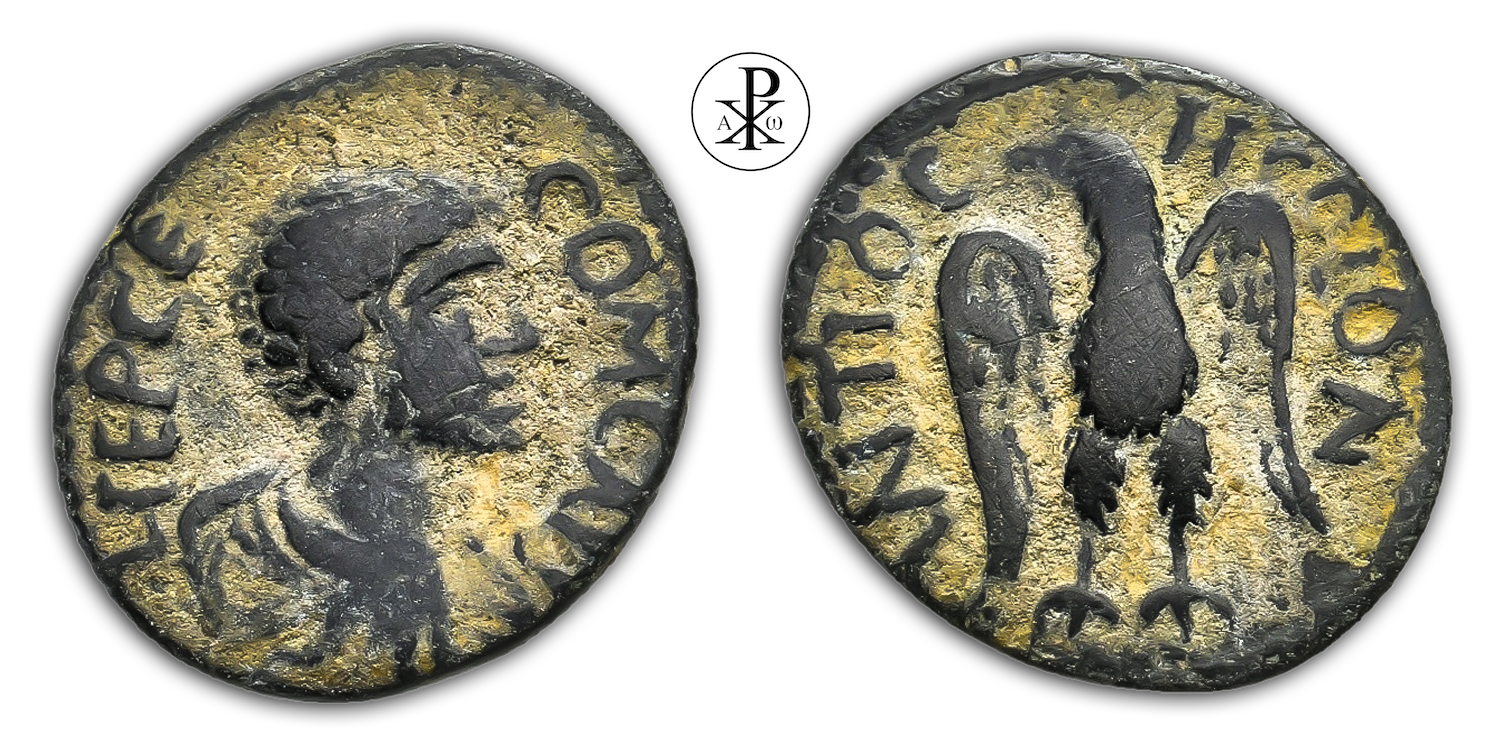Lucius Aurelius Commodus Caesar Augusti Filius
Reign: Marcus Aurelius
Mint: Antiochia ad Pisidiam, Pisidia
Date: 166/177 AD
Nominal: Bronze
Material: AE
Diameter: 17.6mm
Weight: 2.78g
Reference: RPC IV.3 10413 (this coin)
Reference: SNG von Aulock 4923 var. (obv. legend)
RPC Online: https://rpc.ashmus.ox.ac.uk/coins/4/10413
Rare: Specimens 3 (0 in the core collections)
Provenance: Bucephalus Numismatic Baar, Switzerland (Auction 16, Lot 807)
Pedigree: –
Special: RPC Online Plate coin
Obverse: Bare-headed bust of Commodus (short beard) wearing cuirass and paludamentum, right
Inscription: [LIEPCE?] COM CAES
Translation: Commodus Caesar
Reverse: Eagle standing, facing, head, left, spreading wings
Inscription: ANTIOCH COLON
Translation: Antiochia Colonia
Comment: Antioch in Pisidia (Latin Antiochia ad Pisidiam, also Antiochia Caesarea or Colonia Caesarea) is an ancient city in Asia Minor in presentday Turkey. It is one of several cities founded by Seleucid rulers named Antiochos and named after them. As the boundaries of the Pisidian landscape were drawn differently over time, Antioch was at times not part of Pisidia. Pisidic Antioch was laid out with settlers from Magnesia on a strategic site near presentday Yalvaç. Following the insecurity problems generated by the Homanadensian wars and the death of Amyntas in 25 BC, Augustus commenced the establishment of colonies of legionary veterans in Asia Minor and, especially, in Pisidia. Those colonies provided room for the necessities of the growing veteran population resulting from the Late Republican civil wars and secured the new route called the via Sebaste that connected the Pamphylian coast with the centre of the peninsula. As shown by B. Levick, the site of Antioch played a key role at the end of a route that was also connected with the ancient ‘Royal road’ towards Lycaonia and Cilicia. The main bulk of colonists was detached from legio V Gallica and legio VII as attested by the epitaphs of veterans discovered near Yalvaç, and a series of coins in the reign of Vespasian recording their signa framing an eagle. The exact provenance of these veterans is disputed between Italy, southern France and even Hispania, but the onomastic evidence of Antioch since the foundation of the colony leaves no doubt about their western origin. Antioch in Pisidia quickly developed into one of the most important Roman cities in Asia Minor. As early as the 1st century AD, there is evidence of several senators who came from Antioch.
The eagle as a symbol of power has a long tradition in other cultures, one that goes back thousands of years. It is often depicted as the bird of Zeus, the king of gods in ancient Greek culture. The Romans carried it forward with their depictions of Jupiter. The power of Jupiter equaled the power of Rome, and where the Romans traveled so did eagle imagery. It appeared on coins, figurines, military paraphernalia, and sculptures.
